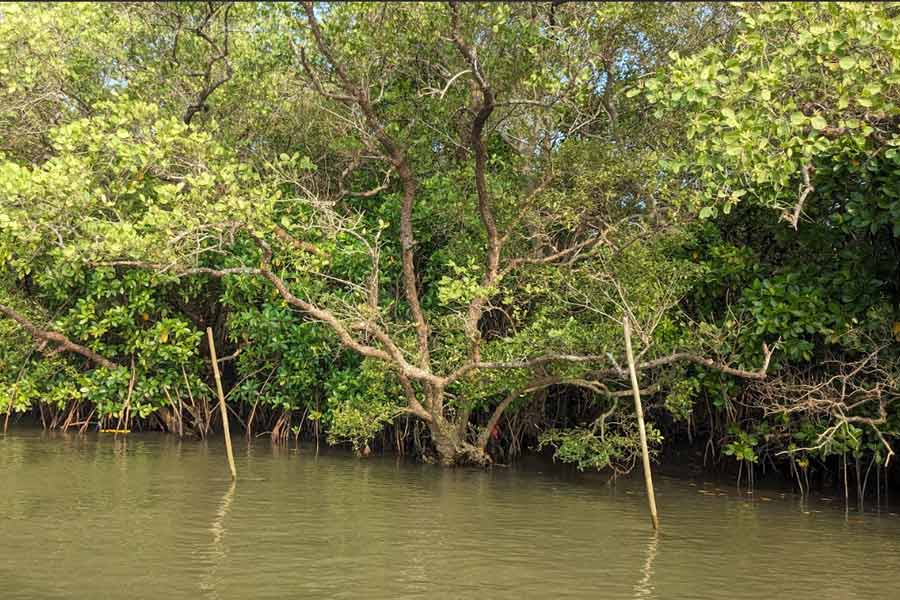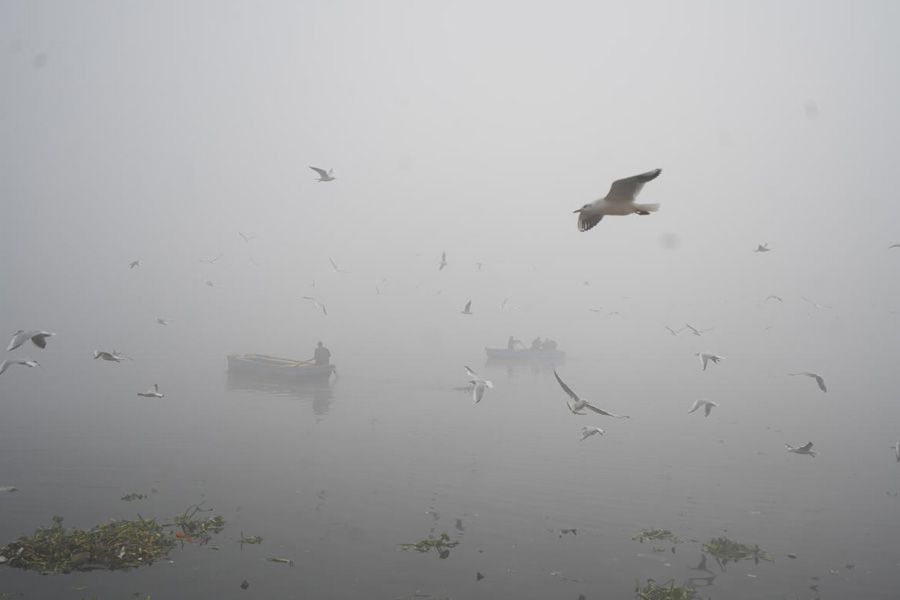Rising sea levels and the Indian Ocean temperature patterns have caused some Maldives’ islands to lose up to half their mangrove cover over the past five years, a loss portending what could happen in the Sunderbans and other mangrove ecosystems.
Scientists have attributed the mass “dieback” of mangrove trees on the Maldivian islands to increased salinity — salt concentrations — from record-high sea levels in 2020 linked to a natural phenomenon called Indian Ocean Dipole marked by seesaw-like temperature changes in the Indian Ocean. Dieback is a progressive decline in a plant’s health.
Their study, published on Tuesday in the journal Scientific Reports, provides the first quantified estimates for mangrove loss in the archipelago since a quarter of the Maldivian islands containing mangrove forests started to experience gradual deterioration of trees in 2020.
Mangroves serve as protective barriers against storms and floods and as biodiversity reservoirs that function as nurseries for crabs, fish and prawns that contribute to food security for coastal populations.
“Our findings show how extreme climate events can compound sea-level rise impacts and adversely affect mangroves across the Indian Ocean region, including potentially the Sunderbans,” Vasile Ersek, a professor of environmental sciences at Northumbria University in the UK who co-led the study, told The Telegraph. “The extreme magnitude of the mangrove dieback illustrates how climate change may push natural systems past thresholds with cascading consequences for nature and people.”
Ersek and his colleagues from Australia, Brazil, Maldives, the UK and the US used satellite imagery, sea levels and temperature data and analysed tree wood to investigate the mangrove dieback.
An inhabited Maldivian island named Neykurendhoo had lost 27 per cent of mangrove cover between the periods 2014-2018 and 2019-2022. Another inhabited island named Hoandedhoo had lost 27 per cent of its mangrove forests over the same period.
Their study revealed that the dead trees showed high stress from salinity compared to living trees. The roots of the trees that died struggled to cope with increased salt concentrations from sea levels which rose at an accelerated rate of 30mm per year between 2017 and 2020.
Around 2020, an Indian Ocean Dipole occurred, causing warmer sea surface temperatures and adding to the increase in sea levels in the region. Although mangroves build their own sediment which allows them to adapt to rising seas, the rate of sea level rise was too fast for the mangroves to keep pace.
The 30mm per year sea level rise between 2017 and 2020 was nearly five times greater than the 6.4mm per year accumulation of mangroves’ sediment. The seawater flooded the mangrove forests and their trees died from drowning in salt water.
Similar mangrove losses have also occurred around the same time in the Seychelles and in Madagascar. “This is a warning for coastal areas worldwide,” said Lucy Carruthers, the study’s first author who is now a coastal science researcher at East Carolina University in the US.
Ersek, however, noted that there are important differences between the Maldives’ mangroves and those in the Sunderbans.
“While both regions face threats from sea-level rise, the Sunderbans receive sediment from rivers, unlike the Maldives’ carbonate platform mangroves that rely mainly on organic matter for the accumulation,” he said.
Carruthers said the impact in the Sunderbans will depend on whether the mangrove forests can retreat landward which would depend on the sediment and accommodation space.
“Islands like the Maldives have very little space which makes them particularly vulnerable,” she said. “Given their location, Sunderbans’ mangrove forests may not be as heavily impacted by the Indian Ocean Dipole — but understanding its impact on the Sunderbans could be an area of future research.”










